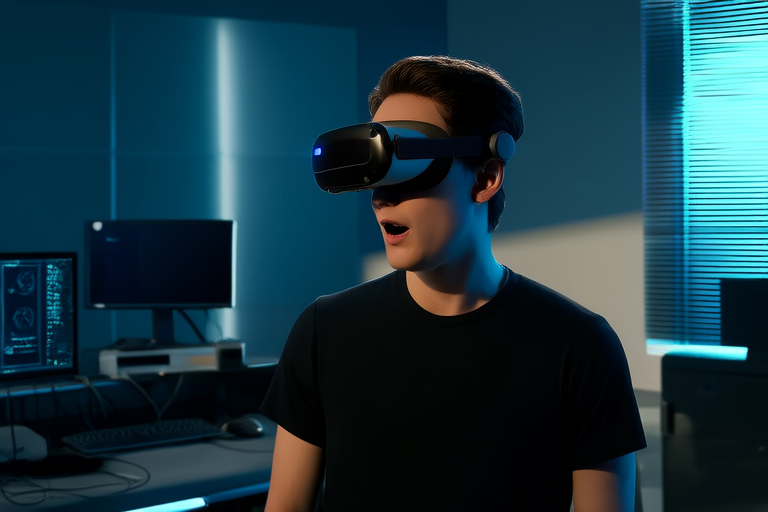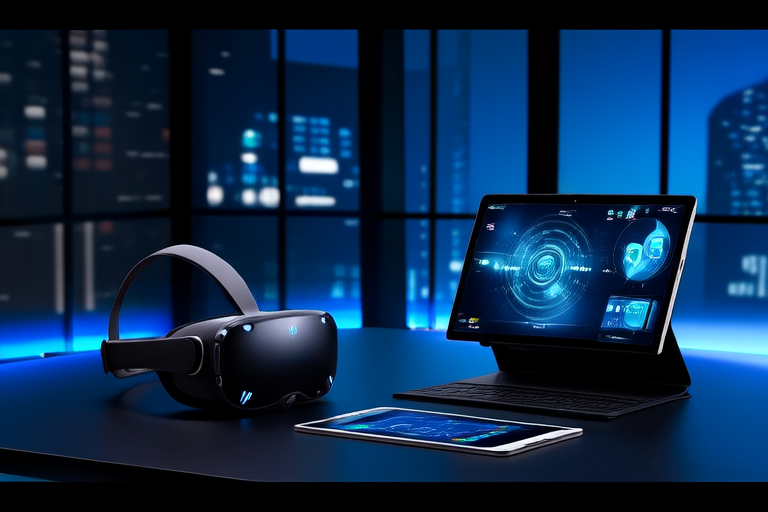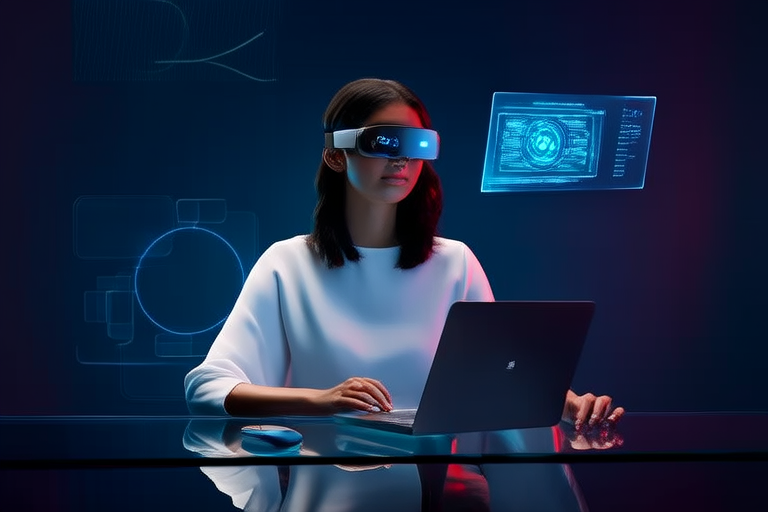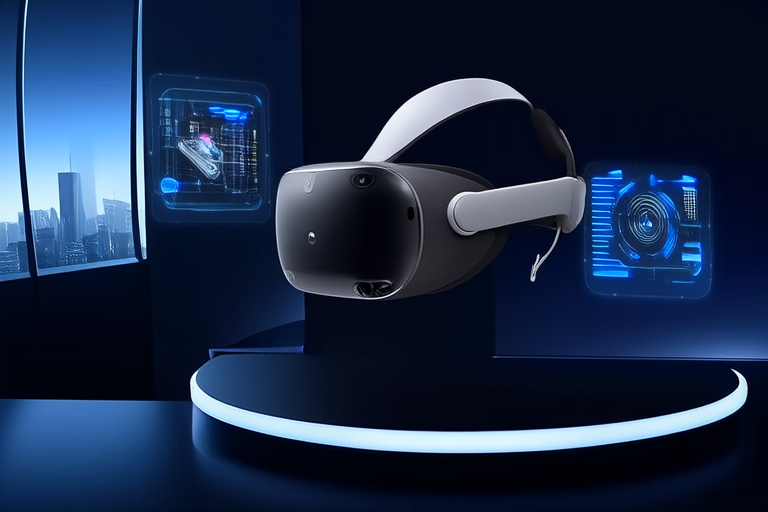The Future of Immersion: How VR and AR Are Reshaping Entertainment
Introduction
In recent years, the boundaries between the physical and digital worlds have blurred like never before. Virtual reality (VR) and augmented reality (AR) are at the forefront of this transformation, redefining how we experience entertainment. These immersive technologies are no longer confined to niche markets or speculative fiction; they are rapidly becoming integral to mainstream media consumption. From gaming to live events, education to film, VR and AR are revolutionizing storytelling, interaction, and engagement. This article explores how these technologies are reshaping entertainment, their impact on key industries, the challenges hindering their widespread adoption, and what the future holds for immersive experiences.
The Impact of VR on Entertainment
Virtual reality has emerged as a game-changer in the entertainment industry, offering users an unprecedented level of immersion. By creating fully realized digital environments, VR transports individuals into alternate realities where they can interact with content in ways previously unimaginable. In gaming, VR has unlocked new dimensions of gameplay, allowing players to step inside their favorite worlds and engage with them physically. Titles like “Beat Saber” and “Half-Life: Alyx” showcase how VR can elevate interactivity and emotional engagement, making players feel as though they are truly part of the action.
Beyond gaming, VR is transforming film and narrative storytelling. Filmmakers are experimenting with 360-degree videos and interactive narratives that place viewers at the center of the story. Instead of passively watching a screen, audiences can explore scenes, choose different perspectives, and influence outcomes. This shift from linear storytelling to participatory experiences represents a seismic change in how stories are told and consumed. Additionally, VR is being used to enhance live events such as concerts and sports, enabling fans to attend virtually from anywhere in the world while maintaining a sense of presence and connection.
The Role of AR in Transforming Experiences
While VR immerses users in entirely virtual environments, augmented reality overlays digital elements onto the real world, blending the two seamlessly. This capability makes AR uniquely suited for enhancing everyday experiences without requiring complete disconnection from reality. In entertainment, AR is already making waves through mobile apps, wearable devices, and location-based installations.
Gaming remains one of the most prominent applications of AR, with examples like “Pokémon GO” demonstrating its mass appeal. The game’s success lies in its ability to merge digital creatures with real-world locations, encouraging exploration and social interaction. Similarly, AR is being used to create interactive museum exhibits, theme park attractions, and public art installations that respond dynamically to user input. In film and television, AR is enabling new forms of audience engagement, such as holographic performances and real-time visual effects during broadcasts.
Live events also benefit significantly from AR technology. For instance, sports broadcasters use AR graphics to provide real-time statistics and visualizations overlaid on live footage, enriching the viewing experience. Meanwhile, theater productions are incorporating AR to add layers of depth and context to performances, blurring the line between stagecraft and digital innovation.
Key Industries Being Revolutionized by VR and AR
The transformative power of VR and AR extends far beyond traditional entertainment mediums. Education is one sector experiencing profound changes due to these technologies. Immersive simulations allow students to explore historical sites, conduct virtual science experiments, or practice complex skills in safe, controlled environments. Medical training programs, for example, utilize VR to simulate surgeries, providing hands-on experience without risk to patients.
In retail, AR is revolutionizing shopping experiences by enabling customers to visualize products in their own spaces before purchasing. Furniture retailers offer apps that let users see how a couch might look in their living room, while fashion brands provide virtual try-ons for clothing and accessories. This not only enhances convenience but also reduces return rates and boosts customer satisfaction.
Travel and tourism are also being reshaped by VR and AR. Virtual tours allow potential travelers to explore destinations remotely, helping them make informed decisions about trips. Meanwhile, AR apps enhance on-site visits by overlaying historical information, navigation aids, or artistic reconstructions onto landmarks and attractions.
Finally, corporate training and collaboration are benefiting from immersive tech. Companies are adopting VR for employee onboarding, safety drills, and team-building exercises, while AR facilitates remote work by overlaying digital tools onto physical workspaces. These innovations improve efficiency, reduce costs, and foster global connectivity.
Challenges to Widespread Adoption
Despite their immense potential, VR and AR face several obstacles that hinder their broader adoption. One major challenge is technological limitations. High-quality VR headsets often require powerful hardware, which can be expensive and inaccessible to many consumers. Motion sickness and discomfort remain concerns for some users, particularly during extended sessions. Similarly, AR devices must balance functionality with portability, ensuring they are both practical and affordable.
Financial barriers also play a significant role. Developing high-fidelity VR and AR content demands substantial investment in specialized equipment, software, and talent. For smaller studios or independent creators, these costs can be prohibitive. Moreover, the lack of standardized platforms and fragmented ecosystems complicates development and distribution efforts.
Social acceptance presents another hurdle. Some people remain skeptical of immersive technologies, fearing they may lead to isolation or over-reliance on digital interactions. Privacy concerns arise as well, especially with AR applications that collect data about users’ surroundings and behaviors. Addressing these issues will require transparency, ethical guidelines, and ongoing dialogue between developers, policymakers, and the public.
Conclusion: A Forward-Looking Perspective
As VR and AR continue to evolve, their impact on entertainment and beyond will only deepen. These technologies hold the promise of creating richer, more engaging experiences that transcend traditional boundaries. Audiences can look forward to increasingly personalized and interactive content, while creators gain access to powerful tools for innovation and expression.
In the coming years, advancements in hardware, software, and networking will likely address current limitations, making immersive tech more accessible and user-friendly. As costs decrease and adoption increases, we can expect to see even greater integration of VR and AR into daily life, from classrooms to boardrooms, cinemas to concert halls. However, realizing this vision will depend on overcoming technical, financial, and social challenges through collaboration and ingenuity.
The future of immersion is bright, offering endless possibilities for how we connect, learn, and entertain ourselves. Whether it’s stepping into a virtual world or augmenting our reality with digital enhancements, VR and AR are poised to redefine what it means to experience entertainment—and life itself.




